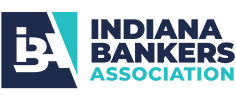“What are you doing to ensure diversity, equity and inclusion (DEI)?”
That question routinely comes up during conference calls among us, clients, and regulatory agencies. Businesses, educational institutions, and non-profit organizations all are focusing on DEI.
Financial institutions are no exception.
In fact, regulatory agencies emphasize the importance of DEI in written communications about the Fair Lending and the Community Reinvestment Act and during their conferences and webinars.
Bank management and staff should start having the conversations regarding DEI and document these discussions and resulting conclusions in the Compliance Committee or other applicable minutes.
Explore the Special Purpose Credit Program
The enhanced attention on DEI can cause stress for banks struggling to meet their communities’ credit needs, and they often struggle with how to incorporate DEI into their lending strategy.
It’s particularly problematic when, despite marketing and outreach efforts, a bank’s lending performance remains below their peers’ performance for prohibited basis groups, low-income population, low- and moderate-income level census tracts, and substantially minority census tracts.
If you are trying to gain traction on DEI and better close your community’s credit gaps, look at Regulation B’s Special Purpose Credit Program (§1002.8). It provides guidance on lending to populations who face challenges meeting the usual criteria for qualifying for credit and receiving favorable terms.
A Special Purpose Credit Program will not develop overnight, but with participation of all bank stakeholders and out-of-the-box innovative thinking, a solution and product development will evolve.
Providing Credit to Underserved Communities
The Consumer Financial Protection Bureau (CFPB), in Supervisory Highlights and blogs and in its December 21, 2020, Advisory Opinion (AO), has suggested the Special Purpose Credit Program as a good way for institutions to address the credit needs of underserved populations.
The December AO contains insight on the program’s requirements and expectations to ensure “fair and responsible access to credit among disadvantaged groups and better address special social needs.”
In addition, the AO’s footnotes are especially helpful and offer research and data for for-profit agencies trying to determine whether a Special Purpose Credit Program is appropriate for their communities.
5 Steps to Develop Your Program
Under the Regulation, financial institutions are required to follow specific steps when developing a Special Purpose Credit Program. They include:
- Identifying prospects. Community leaders may be able to identify residents and businesses who would benefit from access to credit. Keep in mind that the program is geared to those “who would otherwise be denied credit or would receive less than favorable terms.” Thus, potential candidates could include minority- or women-owned small businesses, residents requiring affordable housing and home improvement loans, and those who would benefit from a credit-building loan program.
- Developing a written plan. Illustrate how you will address local credit issues. Key considerations include:
- Individuals or groups who would benefit;
- Procedures and standards;
- Period the program will exist or when to reevaluate it; and
- Research and analysis justifying the creation of the Special Purpose Credit Program.
- Meeting with your regulators. Present your written plan for the Special Purpose Credit Program and your data and research to your regulators. They can help you determine whether your program is on target or if it requires tweaking.
- Marketing your program. Get the word out to targeted groups about your Special Purpose Credit Programs by partnering with community organizers, holding informational meetings, sending e-blasts to prospects, and sharing information in newsletters.
- Measuring effectiveness. Monitor your efforts. Regulation B §1002.5 and §1002.15 allow financial institutions to collect GMI for self-testing purposes. Such insight can help you determine how effectively you’re addressing the needs of your targeted group.
Real-World Success
TCA has seen several banks successfully implement Special Purpose Credit Programs.
One provided financing for home improvements—roofing, HVAC systems, handicap ramps, plumbing, and so forth—for low-income homeowners.
Another program helped low-income residents with car repairs and personal care—medical and dental costs and eyeglasses.
Such borrowers received special rates in both cases and were subject to terms with less restrictive underwriting requirements.
Providing a Credit Builder or Credit Repair Program is yet another way to assist low-income residents.
TCA Can Help
If you are considering a Special Purpose Credit Program, talk with staff and bank management about what the program will look like, ways to tailor it to your community, and how the product could evolve as local needs change and new ones emerge.
We’re available to help advise you on the development of your bank’s Special Purpose Credit Program and provide guidance on your Fair Lending Program.
TCA can show you A Better Way to manage your Fair Lending Program.
For more details on and help with your Special Purpose Credit Program:






